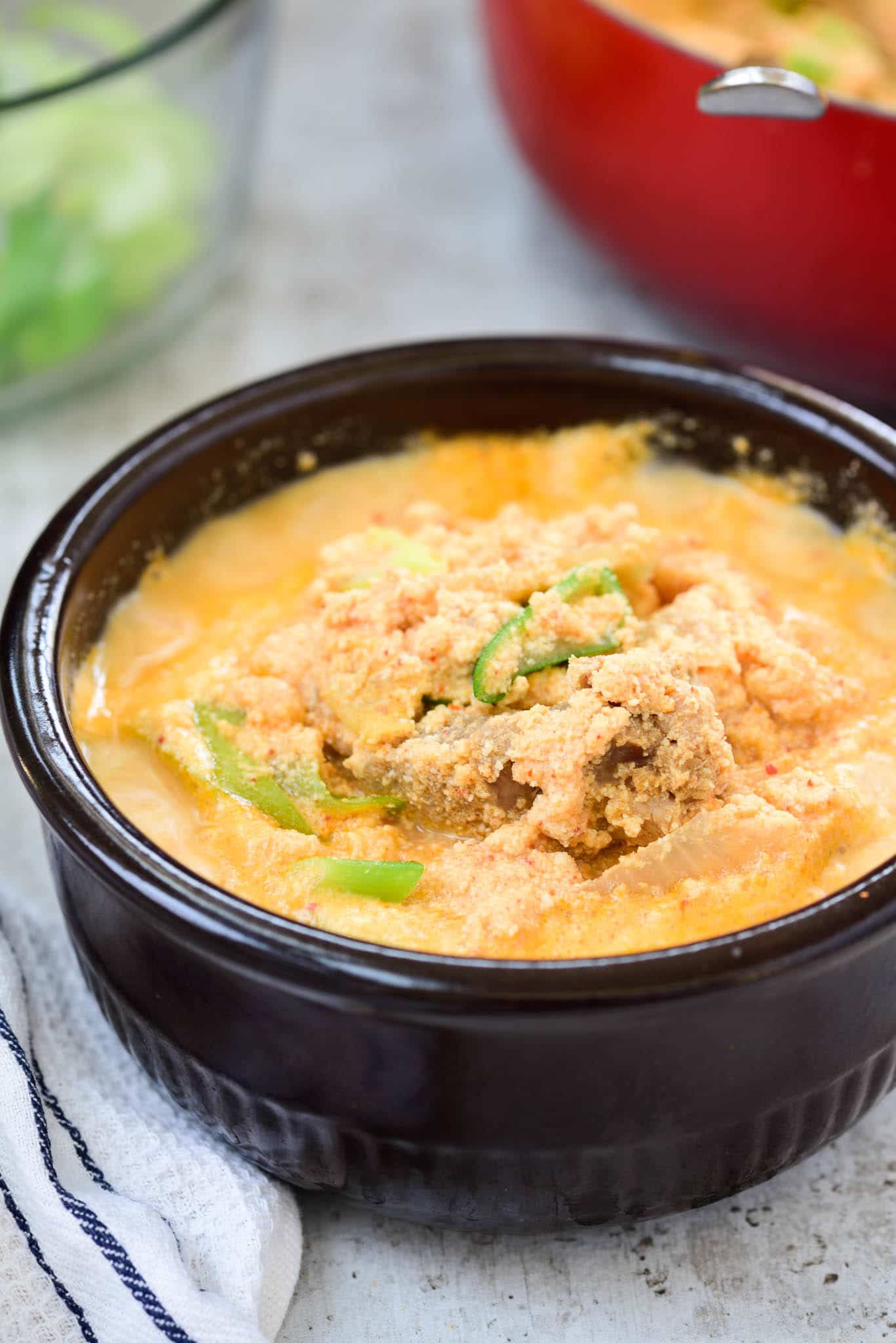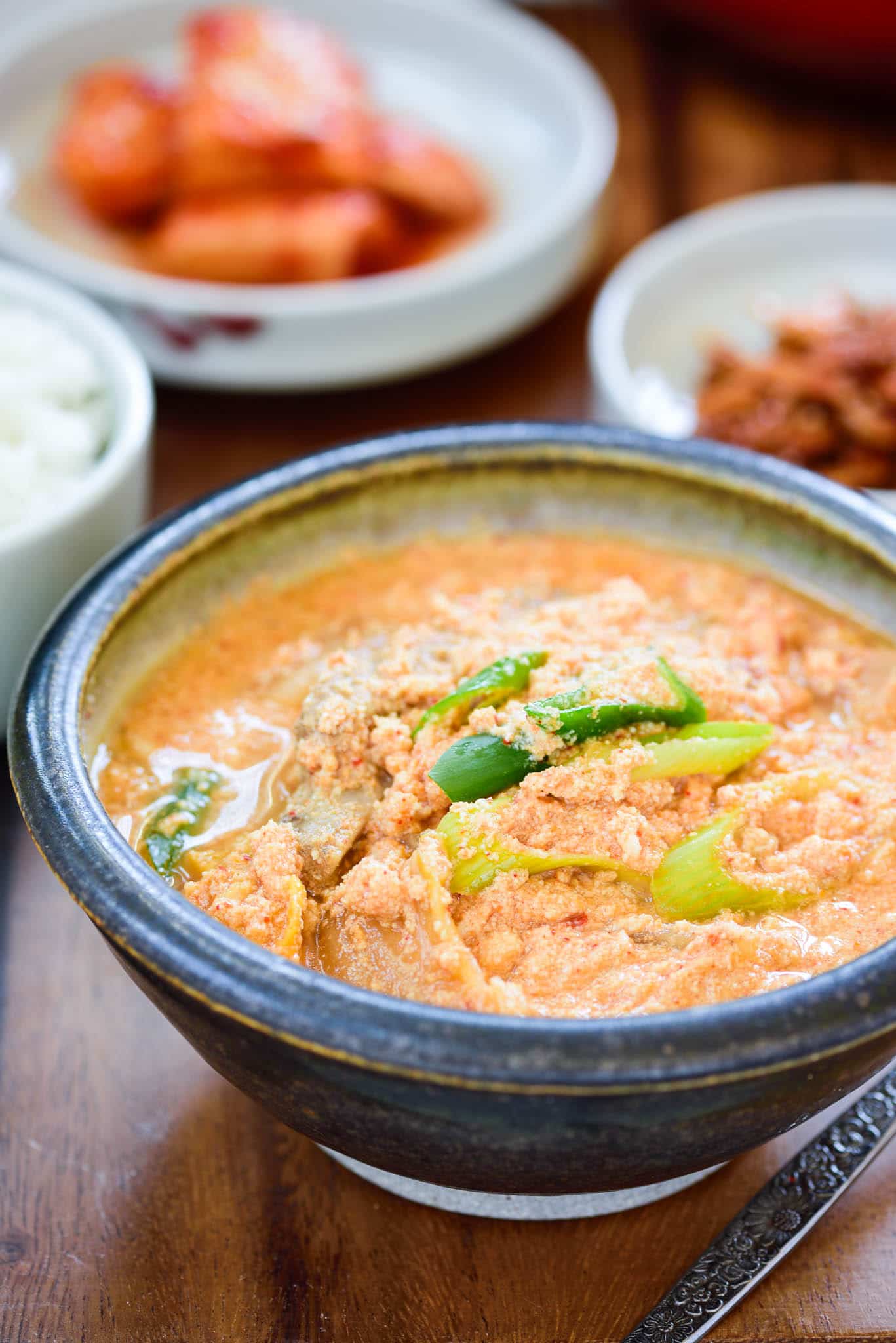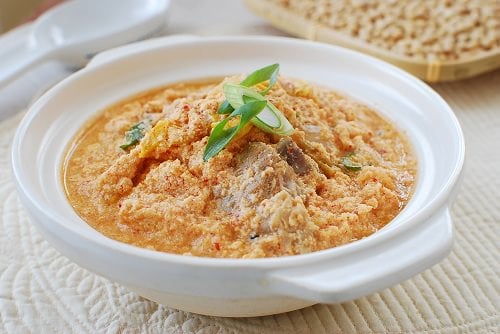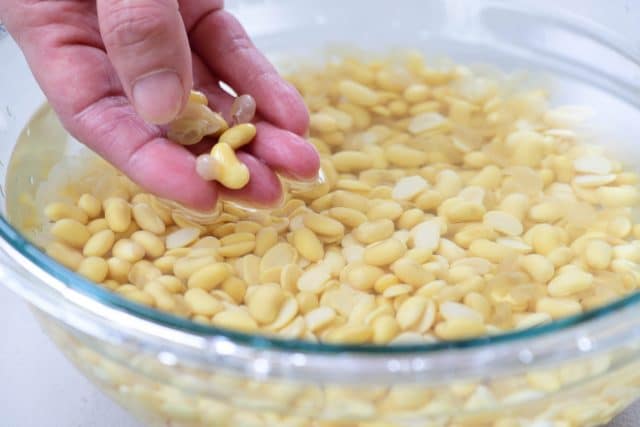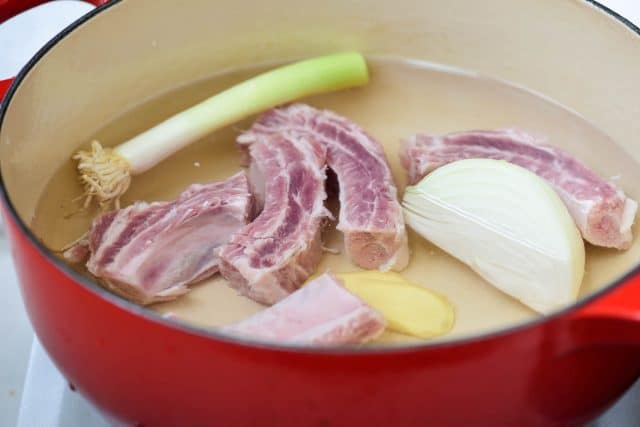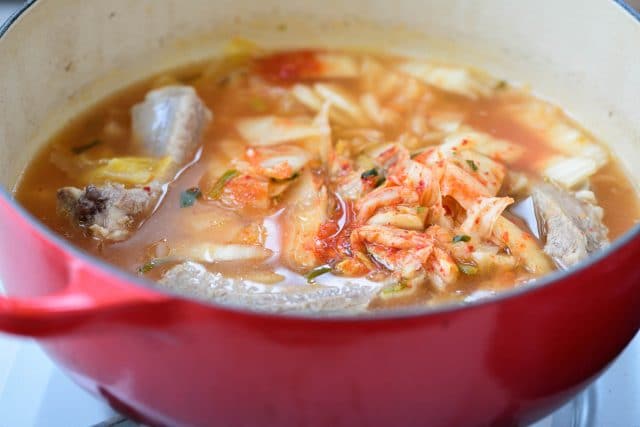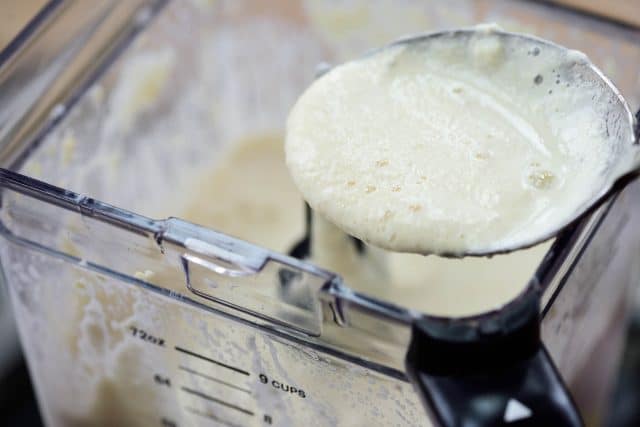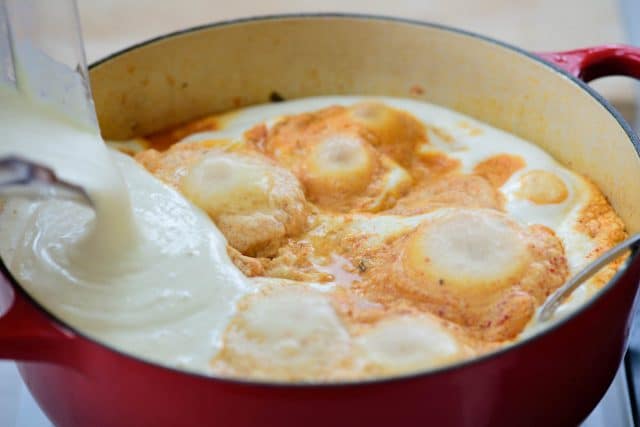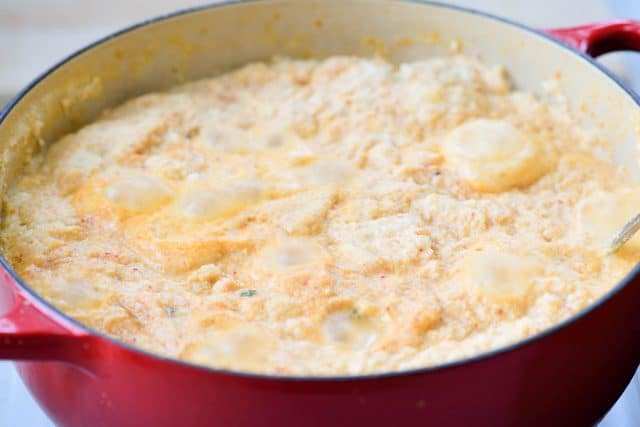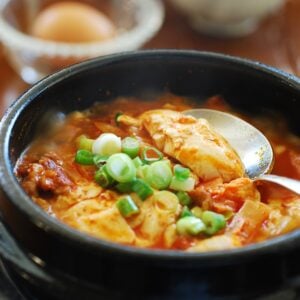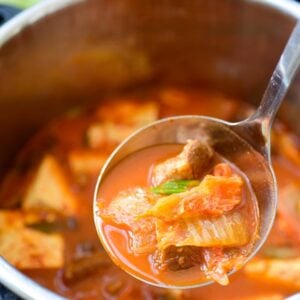Kongbiji jjigae is a stew made with creamy purée of soaked soybeans. With pork and kimchi, it’s full of delicious flavor, hearty and warming! It deserves a spot on your list of favorite Korean stews.
Kongbiji jjigae (콩비지 찌개) is a stew made with creamy purée of soaked soybeans. It’s a warming and comforting stew my family loves! Pork and kimchi make this dish a hearty, delicious stew for an everyday family meal.
In the past, this stew was made with soy pulp (kongbiji in Korean) that’s left from making tofu. In modern cooking, it’s more commonly made with finely ground soaked soybeans.
Dried soybeans are a pantry staple in Korean homes. They are used to make kongjang and kongguksu in summertime, and this stew during cool/cold months. These are the same beans used for doenjang (fermented soybean paste) and soybean sprouts. Rehydrating dried soybeans takes 6 to 8 hours, so plan accordingly.
Growing up, we usually had this stew made with pork ribs and kimchi. I still think that’s the best way! I use baby back ribs, you can use spare ribs as well. The ribs take some time to cook, so I pre-boil them until tender and then add kimchi and soybean puree.
You can use pork meat instead if you like, preferably with some fat. Pork shoulder/butt is a good cut for this dish. Pork fat enhances the nutty flavor of soybeans. If using pork meat instead of ribs, stir-fry it with the kimchi, add water or anchovy broth, and boil for a few minutes over medium high heat before adding the soy purée.
Instant Pot Method
To make this dish in the Instant Pot, using less water (about 2 cups for this recipe), cook the ribs with aromatic vegetables on manual high for 12 to 15 minutes, depending on the size of the ribs. You can quick release after a few minutes. Remove the aromatics and the scum as well as some fat, if desired. Then, add the kimchi, juice from kimchi, and soybean puree along with the garlic, soup soy sauce, and the optional gochugaru. Cook on manual high for 10 minute, and quick release after 10 min.
If using pork meat instead of ribs, simply stir fry the bite sized meat with kimchi, and add water along with puréed soybeans and seasoning ingredients. Cook on manual high for 10 minutes, followed by quick release after 10 min.
Mild Variation
Sometimes, kongbiji jjigae is made white without kimchi and gochugaru for a mild taste. Napa cabbage is great for a mild version. You can season the stew with soup soy sauce and/or salt or serve it with a soy based sauce (yangnyumjang, 양념장).
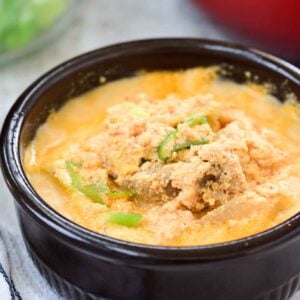
Ingredients
- 1 cup dry soybeans yields 2-1/4 cups soaked
- 12 ounces pork ribs or 6 ounces pork shoulder
- 2 thinly sliced ginger pieces about 1 inch-round
- 1/4 medium onion
- 1 scallion white part
- 1 tablespoon soup soy sauce
- 8 ounces kimchi cut into bite sizes
- 1/2 cup juice from kimchi or to taste
- 1 teaspoon gochugaru (2 teaspoons for spicier stew) - optional
- 1 tablespoon minced garlic
- 2 scallions roughly chopped
- salt and pepper to taste
Instructions
- Rinse and soak 1 cup dried soybeans for 6 to 8 hours (or overnight). Rub the beans with your fingers to remove the skins, and pour out the skins that rise to the top. Repeat this process to remove as much skins as possible.
- Add the ribs, onion, scallion, ginger, soup soy sauce and 4 cups of water to a medium to large pot. (See note 1) Bring to a boil. Skim off the scum. Reduce the heat to medium low. Cover, and cook until the ribs are tender, 25 - 30 minutes. The resulting broth should be around 2 to 2.5 cups. Remove the aromatic vegetables. (See note 2 if using pork meat.)
- Add the kimchi, juice from kimchi, garlic, and the optional gochugaru to the pot. Bring to a boil over medium high heat. Continue to cook for 5 - 6 minutes.
- Meanwhile, finely grind the soaked beans in an equal amount of cold water (2 to 2.5 cups) until it becomes creamy.
- Add the ground soybeans to the pot. Reduce the heat to medium low.
- Simmer, uncovered, until the soybean puree is cooked, 12 - 15 minutes, gently stirring a few times. Further reduce the heat, if necessary, to maintain a gentle simmer. Stir in the chopped scallions with 2 - 3 minutes remaining. Salt and pepper to taste. Serve hot with a bowl of rice.


